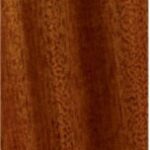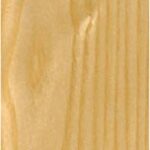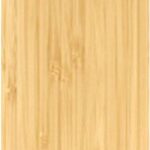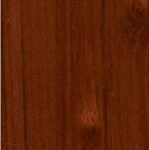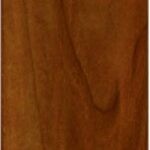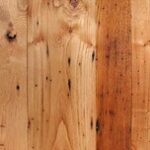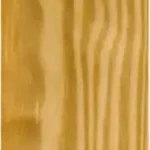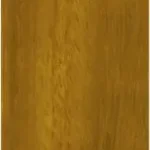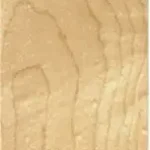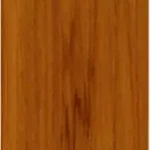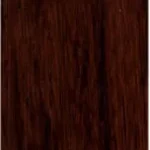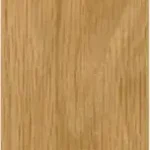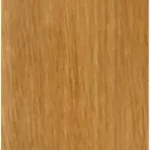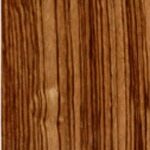African Mahogany
Also known as Khaya senegalensis, African Mahogany originates from tropical areas of West Africa.
The color is unique; it will display tones of pale pink and deep red-brown with streaks of medium and dark brown throughout the heartwood. The color will darken with age and exposure to sunlight.
Timber from this species is finding more and more use in place of American mahogany wood to manufacture furniture, due to the increase of price and decreased availability of American mahogany.
This species is rated as moderately durable, with resistance to termites. African Mahogany is easy to work with and is used for a number of applications, including custom furniture, turned items, architectural millwork, boat building, veneer, plywood and musical instruments.
The oil from African mahogany is also extracted and used in pharmaceuticals and cosmetics.

2″ thick mahogany premium wide plank countertop. Natural color with Marine Finish and an ogee-P edge.
Ash
This species is native to North America and thrives in a variety of soils and climates, especially in Eastern North America. Ash is a fast-growing — between 13 and 24 inches every year — and can reach heights from 50 to 80 feet.
There are several common types of ash trees in America, with white ash being the largest. Ashwood is renowned for its ease to work with, stains to a good finish and dries easily without degrading.
Ash’s heartwood has a light to medium brown color. The sapwood is also beige or light brown and is often difficult to discern from the heartwood. The grain pattern usually straight and regular, but figured boards are occasionally found.
While this species is great for furniture, it is best known for its role in the production of baseball bats. In Major League Baseball, ash was the lone standard for producing bats until maple came on the scene. Recently, the constant splitting of maple bats has become a widely discussed and controversial subject. The strong yet flexible wood makes ash unlike any other species available. Ash trees are also frequently used to make other sporting goods like hockey sticks.
An interesting fact about Ash trees is that they are actually part of the olive family.

1 1/2″ thick ash premium wide plank island top. Natural color with Marine Finish and an ogee-A edge.
Bamboo
While it is categorized as wood and can grow very tall, bamboo is actually a species of grass and is not a tree. This contributes to its uniform texture and lack of sapwood or growth rings.
Without a doubt, bamboo has one of the widest ranges of uses and is one of the most sustainable materials to use. Most commonly distributed from South Asia, bamboo can be found all over the world in varied climates, from cold mountainous regions to tropical areas. Aside from being one of the tallest grasses, it is also the fastest-growing plant, capable of growing 3 to 4 feet per day under certain conditions.
Bamboo is light and durable with a tensile strength greater than mild steel. Bamboo requires extra care and expertise when used for woodworking purposes. It is very versatile and naturally resistant to bacteria, which makes it ideal for kitchens. When made from a mature plant (over 5 years old when harvested), a countertop made from Bamboo will be harder than most woods.

1 1/2″ thick bamboo edge grain countertop. Caramelized bamboo with Marine Finish and an eased-square edge.
Brazilian Cherry
Aptly named, Brazilian Cherry is harvested on the slopes and river banks in Brazil, as well as other areas of Central America, southern Mexico, northern South America and the West Indies.
The wood is highly resistant to brown-rot, white-rot fungi and termites. There is sometimes confusion regarding its name. While it has the word cherry in its title, it is not actually a cherry tree and has no relation to the common American cherry species.
This wood is well known for hardwood flooring but is also a very popular choice for indoor and outdoor furniture. It is a versatile wood that goes well with most décors.
The Brazilian Cherry has a very beautiful reddish-brown color, with an interlocking grain and a golden luster or a glow from beneath. The color will darken over time when exposed to light.
It is an extremely heavy and durable wood, which makes it desirable and able to hold up over its lifespan in the home.

Cherry
North American Cherry is one of the most well-known woods. The wood of cherry is fine-grained with a distinctive, reddish-brown color that darkens with age and polishes well.
Black Cherry is the largest of all North American Cherry trees and can span to 100 feet, while the average height is about 80. The heartwood of the cherry tree is the most popular area used because it has the reddish color that cherry is associated with. The sapwood gives off a whitish color, to a light reddish-brown.
The hardwood is somewhat soft. It measures 950 on the Janka Hardness Test, which is 26 percent softer than the red oak hardwood benchmark. It is much sought after as a durable hardwood for making furniture, veneers, musical instruments, and for woodturning and carving. It was also traditionally used for making smokers’ pipes. When used as a fuel, cherry wood burns with a fragrant smell. It is the most used lumber material for cabinets and is also commonly used for doors.
Cherry is highly resistant to decay, and has excellent stability and warps very little once dried.

Premium wide plank cherry countertop for a wet bar.
Chestnut
The American chestnut tree was once a native tree that grew from Maine across the Midwest. With its abundance, workability and resistance to decay, it was a cornerstone of society for its economic uses from railroad ties to fences.
At the beginning of the 20th century, a blight hit the chestnut tree population, and the fungus nearly took out the entire population of chestnut trees by 1940. Lumber was still used from the trees left standing that was infested with holes and borers. This is referred to as “wormy chestnut.” Today, antique or reclaimed Chestnut is still used from old barns and other structures and sold as reclaimed lumber.

4″ thick antique-chestnut premium wide plank countertop. Custom blackened-steel corner caps and a Marine Finish.
Heart Pine
Heart Pine is actually the heartwood of a pine tree. This type of wood is special because pine trees today are harvested early, and do not grow long enough to develop heartwood. There is very little old-growth southern pine or longleaf pine forest remaining, and wood that is marketed specifically as Heart Pine today is reclaimed wood from old structures.
First-generation trees for Heart Pine date back hundreds of years and were able to reach full maturity to get an extremely hard and durable heartwood.
Heart Pine is commonly used for flooring and doors, and its characteristics lend itself well for countertops. It is a very dense material that encompasses beauty and elegance.

1 1/2″ antique Heart Pine island top. Natural color with Marine Finish and an eased-square edge.
Iroko
The Iroko tree is native to the west coast of Africa. It is sometimes referred to as African or Nigerian teak, but there is no relation.
The wood is dense and very durable, often used in cabinetmaking and paneling. With its similar color and grain, it is often used as a substitute for teak in many applications.
It has an interesting appearance: the heartwood is typically a golden or medium brown which will darken quickly after installation. It is rich in natural oils, which makes it a perfect hygienic work surface for the kitchen, while also retaining its durability and character.
Iroko is commonly used for a host of applications, including veneer, flooring, custom furniture, boat building and other specialty items.

1 1/2″ thick Iroko premium wide plank island top. Natural color with Marine Finish and an ogee-a edge.
Lyptus
Lyptus is a trending, environmentally-friendly wood, grown on plantations in South America. These plantations consist of eucalyptus trees and native tropical forests to balance the ecosystem. Lyptus forests are more productive than a temperate forest, and a Lyptus tree can be ready for harvest in as little as 14 years in a warm climate like Brazil.
The strength of Lyptus is similar to hard maple, but since it is grown in a plantation setting, there is more control and the yield is more than other hardwoods. Also, more of actual logs are utilized in production (scraps are used for bioenergy in kiln-drying).
The harvested wood has a straight and fine grain and an even texture. It is known to be very uniform and has very few knots due to the hands-on care during the harvesting process. The color ranges from a pink to pale, red-brown with darker variations, and is receptive to all kinds of different finishes and stains.

1 1/2″ thick Lyptus end grain butcher block. Natural color, sealed and oiled with an eased-square edge.
Maple
Maple has been the favorite wood of furniture makers since Colonial times and is known for its strength and beauty. There are two different types of maple — hard and soft– and both are good choices for countertops, doors, flooring and even musical instruments.
Hard maple is resistant to splitting and is extremely durable. This is a popular choice in the production of sporting equipment such as baseball bats, billiard sticks and bowling pins. Sugar and Black Maple are two varieties used in furniture making, flooring and cabinets.
While soft maple is not as hard or heavy, it is still a good choice for furniture. Silver and Red Maple make up most soft maple lumber and have a density similar to cherry. Colors range from cream to light brown with dark red or black streaks.
Maple can have uncommon grain patterns that give it a unique look for certain tops. Curly maple has a striped appearance, while quilted maple resembles ripples of water.
Aside from furniture making, maple is also a popular wood for smoking meats, due to its sweet aroma.

2 1/4″ thick maple premium wide plank countertop. Natural color with Marine Finish and an ogee-J edge.
Teak
Teak is one of the most desirable and useful woods, known for its color and durability. It is found throughout southeast Asia but is now widely cultivated in other tropical areas. Even without being oiled or finished, it is extremely durable and weather-resistant due to its natural oils. It is also highly resistant to termites and other insects.
The timber is a yellowish-brown color with good grain and texture.
Aside from furniture, it is a popular choice for outdoor furniture, flooring, decks and shipbuilding. In England you can still find park benches over 100 years old that were made of salvaged teak from old ships after they were put out of commission.

2 1/4″ thick teak premium wide plank island with drain grooves. Majestic Brown #3 color with Marine Finish and an ogee-F edge.
Walnut
Walnut is the only North American hardwood that has a rich dark color. Because of this, it is highly requested by both consumers and wood craftsmen.
There are about 20 different species of walnut in the United States, and the trees can grow up to 100 feet tall. It has a light, cream-colored sapwood with its classic dark-brown wood and straight grain.
With its great workability and exceptionally straight grain, aside from cabinets and furniture, it is used for luxury car detailing, musical instruments, and even gunstocks due to its stability and shock resistance.
Over the years, walnut develops a lustrous patina that makes it look richer with age. Its color also goes well with other wood species when choosing an end grain butcher block.

2 1/4″ thick walnut premium wide plank island. American Brown #2 color with Marine Finish and an ogee-F edge.
Wenge
Wenge is an interesting wood species. The heartwood is very dark brown to almost black in tone with alternate layers of light and dark tissue. Unlike most other woods, Wenge is reported to take on a lighter shade when exposed to light.
It is an exotic hardwood that originates in Central Africa, primarily in the southern regions of Mozambique and Tanzania in open forest areas. It can also be found in swampy forest areas of the Congo. The trees can span up to 90 feet in height and may have a diameter of up to 4 feet.
For workability, Wenge has excellent strength and hardness, measuring 1630 on the Janka Hardness Test, which is a bit higher than red oak. It is commonly used for flooring, paneling and furniture. In addition to the flooring and furniture industries, Wenge wood is also used in the production of different musical instruments and archery bows. Because of its stability and rich color, it is also a popular choice for high-quality cane makers.
Traditionally, it has been known in Africa as a wood used for carving and prized for cabinet wood and fine furniture. Its dark color makes it very attractive for a myriad of decorative projects and applications.

Ash and wenge end grain butcherblock
White Oak Plain Cut
White Oak is found in the eastern United States, Minnesota, and Texas as well as Quebec Province in Canada. There are several types of white oak species, but only eight of them can be used for commercial applications, with the most popular being the Quercus alba.
The heartwood of the white oak has a light brown, almost creamy-brown color. Some planks can also have a light pinkish or gray tint. White oak is unique in its cellular structure, which is very close and does not allow water to go through. Because of this, the hardwood has been used for ages to build ships, agriculture applications, and outdoor furniture. It is also very rot resistant.
Aside from countertops and furniture, white oak is well known for in the hardwood flooring industry and makes up about 15% of the wood used.

White Oak Live Edge Island
White Oak (Rift Cut)
White Oak is found in the eastern United States, Minnesota and Texas as well as Quebec Province in Canada,. There are several types of white oak wood species, but only eight of them can be used for commercial applications, with the most popular being the Quercus alba.
The heartwood of the white oak has a light brown, almost creamy-brown color. Some planks can also have a light pinkish or gray tint. White oak is unique in its cellular structure, which is very close and does not allow water to go through. Because of this, the hardwood has been used for ages to build ships, agriculture applications, and outdoor furniture. It is also very rot resistant.
Aside from countertops and furniture, white oak is well known for in the hardwood flooring industry and makes up about 15% of the wood used.

White Oak, Rift Cut
Zebrawood
While many kinds of wood may be labeled as zebrawood, the true species comes from West Africa, and a sure way to tell if it is authentic is the odor when you cut into it (do not worry, the smell is gone once dried and finished). As for aesthetics, it got its name from its appearance of distinctive striping patterns, reminiscent of zebras.
The heartwood is usually a pale, yellowish-brown with dark brown or purple-black streaks. Because of the interesting pattern, it is usually quarter-sawn to show off the attractive alternating colors.
It is a hard, heavy, and durable wood, typically used for furniture, cabinets.

1 1/2″ thick zebrawood premium wide plank island.
